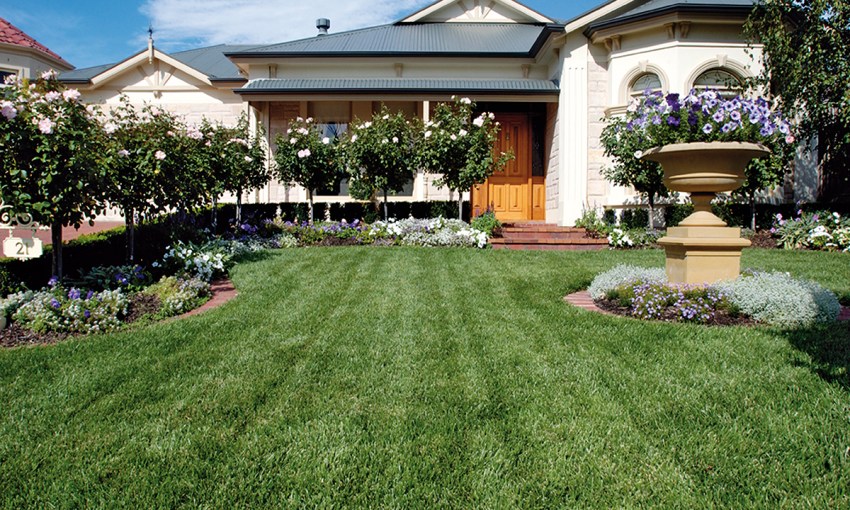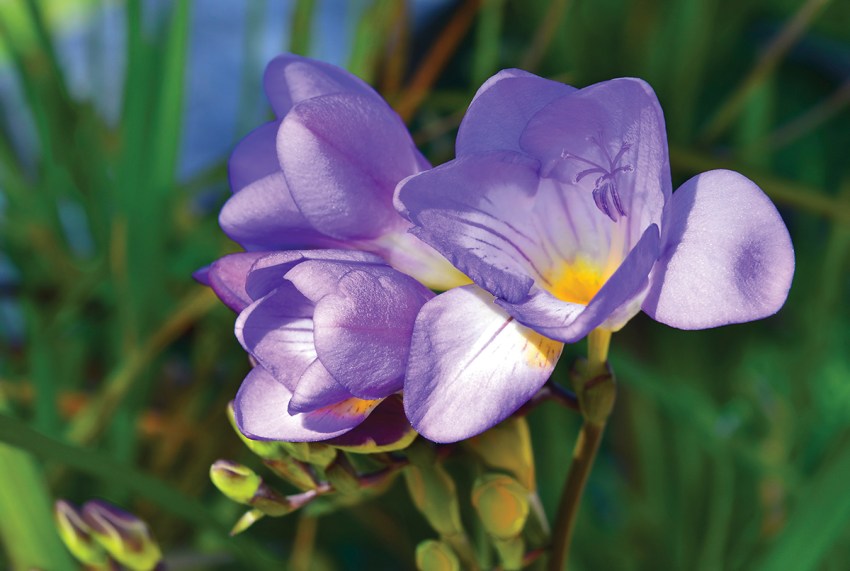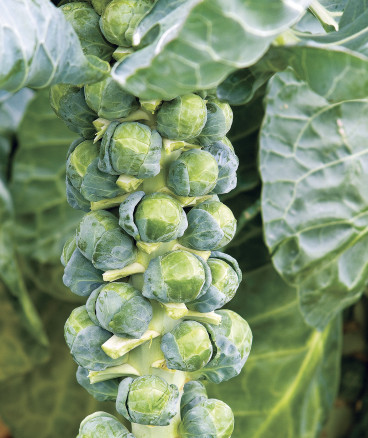Get out into the garden this weekend to look after your lawn, plant some freesia bulbs and get some Brussels sprouts in the veggie patch.
In the garden: love your lawn, plant some freesias, Brussels sprouts
Winter blues
In the cooler months, lawns enter a semi-dormant stage, yellowing-off and looking unhappy. The quick and easy way to eliminate this is twofold. Most turf grasses will stay relatively green if they are fertilised regularly (once a month) before the harsh cold hits. Modern lawn fertilisers are blended with nutrients and trace elements that will keep your lawn green during winter. Cut back on watering in winter and, more importantly, continue to cut your lawn. A regular clip every two or three weeks will keep it in good shape. For more individual advice, take a 10-centimetre square sample into your local garden centre.
Plant Some Freesias
This extremely hardy bulb will thrive in most SA gardens; plant it one year and it will keep coming back. Originating in South Africa, freesias thrive in our dry conditions and are ideal to fill any gap in the garden.
How to grow:
Purchase bulbs from recognised nurseries and plant in early winter. Don’t plant too deep – only five centimetres depth – with the pointy end up. They look great mixed with other plants in an unstructured patch. The annual will bloom and die-down, so feel free to plant shallow herbs like basil or coriander on top in the off-season.
In flower:
A spring tube-type flower with delightful perfume, freesias will appear from late winter in a raft of shades, from red, white, yellow, purples and pinks.
Sprouts: a tall story
Brussels sprouts may not be everyone’s favourite vegetable to eat, but they are easy and rewarding to grow.
Love them or hate them, Brussels sprouts, a cool season crop, have an important nutritional value and they’re high in vitamin C and potassium. Homegrown sprouts are tender and have a delicious, sweet nutty flavour when picked early, and really do deserve a spot in your vegetable garden.
Brussels sprouts, Brassica gemmifera, are members of the huge Brassicaceae or mustard family that also includes cabbage, cauliflower, broccoli, turnip, mustard and kale.
They grow well in fertile soil that has had well-rotted compost or aged animal manure added to it before planting. As sprouts grow very tall, it’s important to ensure their roots have a firm base to help support their height, especially in windy areas. Like most from the Brassica family, crop rotation is necessary so don’t plant them where you have recently had any other members of this family growing.
Sow the seeds in late spring or early summer for autumn and winter harvesting and the seedlings will be ready to plant out when they are about four to five weeks old. The seeds can be sown directly into the garden bed, but it’s probably better to sow them into seed trays and transplant them out as small seedlings. The plants need time to grow before the weather cools down as the sprouts will go to seed in spring if they are planted later than early summer.
When the seedlings are about two months old, mound the soil up around the stem to prevent them from falling over in any strong winds. Generally, sprouts are very hardy and will tolerate frosts and even dry conditions. As Brussels sprouts need cross-pollination by insects from another plant of the same species (that can include cabbage, broccoli, cauliflower or kale) it’s important to plant more than one plant from that family, especially if you want to save the seeds for future crops.
Keep the young plants well-watered and the area free of weeds and remove any dead, damaged or diseased leaves. It might even be necessary to stake the plants as they grow tall. Apply a top dressing of nitrogen fertiliser like sulphate of ammonia or an organic liquid feed in late summer.
The sprouts are generally ready for harvesting about four months after sowing the seeds and if planted out any later, you may want to wait until after the first frosts as they seem to taste better. Pick from the bottom of the plant with a sharp knife or snap the entire bush off by pulling it downwards. The young leaves at the top of the stems can also be picked and cooked as a tasty green. When you’ve picked off all of the sprouts from the long stem, smash the stem to help it break down quicker and add it to the compost heap.
Keep an eye out for pest and disease during their growth because cabbage aphids and whitefly can be a problem.
Most types of Brussels sprouts are a green variety, however there is a red variety called Ruby that is becoming popular. Best to check with your local garden centre to be sure you will be planting the correct variety at the correct time.





